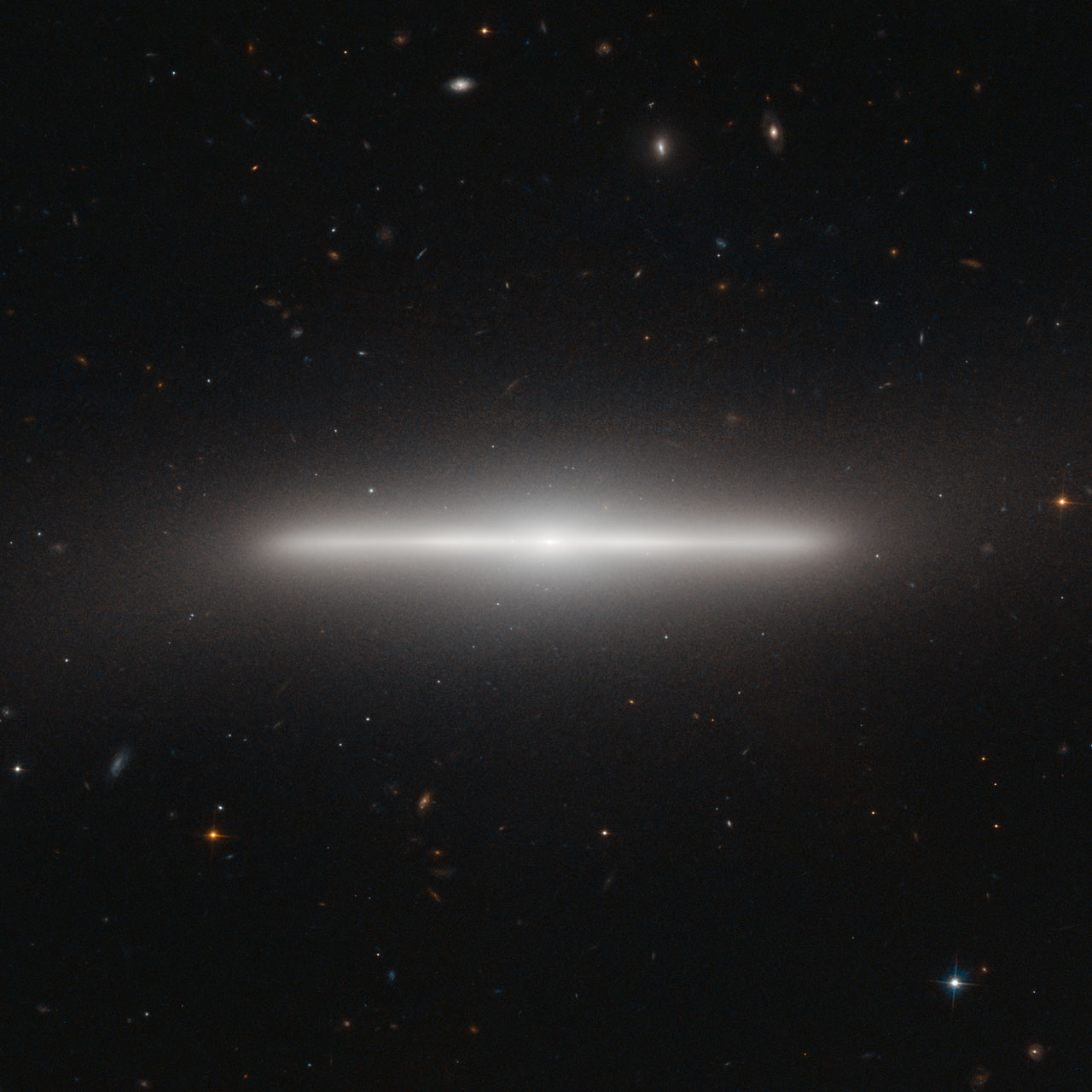If the color index of NGC 4452 is +0.89, then it is very considerally yellower than the Sun, and its light must be dominated by late class G and early class K stars. These stars are all yellower than the Sun. You called the Sun yellow, and yet you argue that a galaxy that is yellower than the Sun should properly be shown as brilliantly white, even blue-white?
I ask you compare the following two Hubble images of galaxies:


The galaxy on the right is starburst galaxy NGC 3310. Let's compare these two Hubble images with the SDSS image of NGC 4452 that I posted earlier:
Chris, you said about the SDSS image of NGC 4452 that
Look at the three pictures I have posted again. Where do you find the most striking "garish orange color"? There can be no doubt that the strongest orange color here is seen in the small bulge surrounding the bright nucleus in the Hubble image of NGC 3310. Now let us assume that the color of the Hubble image of NGC 3310 is well balanced, so that it really gives us a very good idea of the color of NGC 3310. But if that is the case, we must surely wonder what kind of stars make up the bulge of NGC 3310. In my opinion, the only way to get such a color in the bulge is that if it is made up of a mixture of stars like Antares and Betelgeuse (color index around +1.60) and blood red carbon stars (color indexes typically around +3 or more). To my knowledge, such bulges simply don't exist.there is a garish orange color that is seen in the galaxy halo
Take a look at the Hubble images of NGC 4452 and NGC 3310 again. Chris has told us that the color index of NGC 4452 is +0,89, which is considerably yellower than the Sun (+0.62). The color index of NGC 3310, however, is only +0.32, which is very blue for a galaxy.
Obviously the bulge of NGC 3310 is made up of yellow stars. Indeed, we can be sure that it is made up of the same kind of stars that make up all of NGC 4452. And yet, Hubble shows the late G and early K stars of all of NGC 4452 as brilliantly white, but in the image of NGC 3310 the same kind of late G and early K stars are shown as strikingly orange.
The SDSS picture gives you a good idea of the real color of a mixture of stars of spectral classes late G and early K. The Hubble picture of NGC 4452 shows these stars as brilliantly blue-white, while its picture of NGC 3310 shows the same kind of stars as garishly orange.
That is why the color balances of the Hubble pictures of NGC 4452 and 3310 are both lousy, either shockingly blue or garishly orange. Only the SDSS picture shows the approximately true color of a mixture of stars of late class G and early class K.
Ann